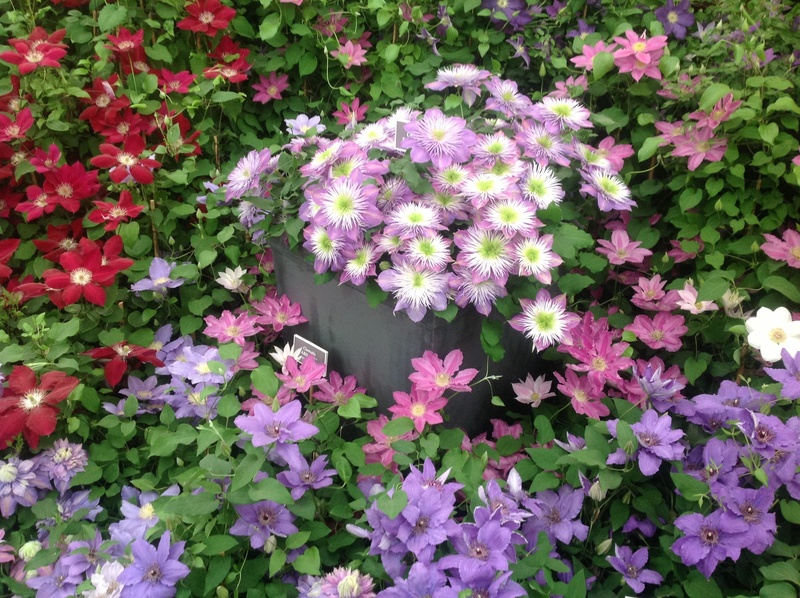Keep Weeds at Bay: 3 Tips for Control
Posted on 16/09/2025
Keep Weeds at Bay: 3 Tips for Control
Weeds are persistent invaders that compete with your desired plants for nutrients, water, and sunlight. Left unchecked, they can quickly overrun your garden, flowerbeds, vegetables, and even lawns. Whether you're a homeowner, a passionate gardener, or someone managing a commercial landscape, knowing how to keep weeds at bay is crucial for the health and aesthetics of your green space. In this comprehensive guide, we'll reveal three proven methods for weed control--tips that don't just work, but will transform your garden maintenance routine.
Understanding Weeds: The Basics You Need to Know
Before you can effectively combat weeds, it helps to understand what makes them so tenacious. Weeds are plants that grow where they're not wanted. They propagate quickly, some producing thousands of seeds in a single season. Their roots can outcompete those of your desired plants, and certain perennial weeds can even regrow from a small root fragment left in the soil.
There are three primary categories of weeds:
- Annual weeds: These complete their life cycle in one season. Examples include crabgrass and chickweed.
- Biennial weeds: Require two years to mature, such as burdock and common mullein.
- Perennial weeds: Persist for many years and are the most challenging to eradicate. Dandelion and bindweed are common examples.
Understanding your weed rivals lets you formulate a tailored and more successful weed management strategy.

Tip 1: Mulching--Nature's Weed Barrier
Why Mulch?
One of the most effective ways to control weeds in any garden or flowerbed is through proper mulching. Mulch serves as a protective layer spread over the soil's surface. Its key benefits include retaining moisture, suppressing weed seedlings, regulating soil temperature, and enhancing soil fertility as it breaks down.
How Mulch Suppresses Weeds
Mulch acts as a physical barrier that blocks sunlight from reaching weed seeds; without sunlight, weeds can't germinate and grow. Organic mulches like shredded bark, straw, and composted leaves are excellent for gardens and flowerbeds. Inorganic mulches such as landscape fabric, gravel, or black plastic are also highly effective at keeping weeds at bay, especially in pathways or larger landscaping areas.
Applying Mulch Correctly
- Depth Matters: Apply mulch 2-4 inches thick. Too thin and weeds might grow through; too thick and you may suffocate plant roots.
- Leave Space: Keep mulch a few inches away from plant stems to prevent rot and disease.
- Replenish Annually: Organic mulches decompose over time; check and top up as needed.
Pro Tip: Combine mulching with other weed control tips for a truly weed-resistant landscape!
Tip 2: Smart Planting and Dense Groundcover
The Power of Competition
One natural way to keep weeds from taking over is to crowd them out by growing healthy, vigorous plants or dense groundcovers. Weeds thrive in open, bare soil. The less exposed soil you have, the fewer opportunities weeds get to establish themselves. This is sometimes called "living mulch" because the plants themselves act as a barrier to weed intruders.
Best Practices for Planting to Prevent Weeds
- Plant Closely: Space your plants according to their mature size so their leaves will shade the soil, reducing the chance for weed growth.
- Choose Fast-Growing Groundcovers: Plants such as creeping thyme, ajuga, sedum, or vinca minor quickly form low, dense mats that smother weeds.
- Rotate Crops in Vegetable Gardens: Regularly changing where you plant vegetables reduces the buildup of weed populations suited to certain soil conditions.
- Keep Lawns Thick & Healthy: Mow your lawn high (about 3 inches). Taller grass shades the soil and limits sunlight for weed seeds.
Groundcover Selection: Pick the Right Plants for Your Climate
Consider native or adapted groundcover species, since they tend to require less maintenance and water while providing reliable weed suppression. Consult your local extension service for region-specific advice.
Quick Fix: Sow a fast-germinating cover crop, such as clover or rye, in bare soil areas between plantings to prevent opportunistic weeds.
Tip 3: Consistent, Targeted Weed Removal
Stay Ahead of the Weeds with Regular Intervention
Even with preventative measures, some weeds will manage to appear. That's why consistent, hands-on weed removal is essential for keeping weeds at bay for good. But how and when you pull matters!
Weed Removal Techniques
- Pull Early and Often: Young weeds are easier to remove and haven't set seed. Make a habit of regular scans and pull weeds before they mature.
- Hand Tools: Use a hoe, hand fork, or dandelion digger to remove weeds by the root. This is especially important for perennial weeds--removing the whole root prevents regrowth.
- Water First: Weeding after rain or watering loosens the soil, making it easier to pull out the entire weed, root and all.
- Dispose Properly: For seeds-bearing weeds or robust perennial roots, don't compost--dispose to prevent spreading!
Timing Is Everything
Dedicate a little time each week for weed patrol. Stay especially vigilant in spring and early summer, when weeds grow fastest. Persistence pays off: regular weeding makes ongoing control much easier.
Tip: For those with larger areas, consider flame weeders or selective, spot applications of safe organic herbicides--but always use chemicals judiciously, as a last resort and according to label instructions.
More Ways to Keep Weeds in Check
Bonus Techniques and Proactive Solutions
- Soil Solarization: For empty beds, cover soil with clear plastic during hot months--this kills weed seeds with heat.
- Drip Irrigation: Water only your plants, not the whole area. Dry areas discourage weeds from sprouting.
- Edge Regularly: Maintain distinct edges between lawns and beds to stop grass and tough weeds from encroaching.
- Don't Disturb Soil Unnecessarily: Tilling brings dormant weed seeds to the surface where they'll sprout. Only disturb the soil when absolutely necessary.
Sometimes, a combination of these extra strategies can be the difference between a weed-choked patch and a thriving, beautiful space.
Why Weed Control Matters: Long-Term Benefits
Keeping weeds controlled isn't just about aesthetics. Why is weed management so crucial?
- Healthier crops and plants: Less competition for water, nutrients, and light means stronger, more productive plants.
- Pest and disease reduction: Weeds can host insects and pathogens harmful to your chosen plants.
- Easier maintenance: Controlling weeds early and often makes for less work in the long run.
- Improved property value: A weed-free landscape is more visually appealing and valuable.
Conclusion: With the right strategies, you don't have to wage war against weeds every weekend. Use mulch to block and starve weeds, let healthy plants and groundcovers outcompete weed seedlings, and stay on top of removal with regular targeted interventions. The result is a lush, vibrant garden that thrives all season long--without a weed in sight!

Frequently Asked Questions: Weed Control
What's the best organic way to keep weeds from growing?
Mulching and dense planting are considered the top organic methods. Regular hand-pulling of weeds before they can go to seed also keeps infestations minimal without chemicals.
Are landscape fabrics effective long-term?
Landscape fabrics can be highly effective for several seasons, especially when topped with mulch. However, eventually organic matter can accumulate on top of the fabric allowing weeds to root, so periodic maintenance is needed.
How often should I weed my garden?
A weekly scan is ideal, especially during fast-growth periods. The more consistent you are, the easier weed routines become over time.
Should I use chemical herbicides?
Herbicides are a last resort in home gardening. When needed, choose targeted spot applications and always follow safety instructions. Prefer natural and cultural weed control methods whenever possible.
Summary: Your Weed-Free Garden Awaits!
- Apply mulch to prevent sunlight from reaching weed seeds.
- Plant densely and use groundcovers to outcompete weed seedlings.
- Remove weeds routinely, targeting them before they can reproduce.
By using these three time-tested tips for weed control, you'll be well on your way to a healthier, more beautiful, and low-maintenance landscape. Start today, and enjoy a weed-free tomorrow!

